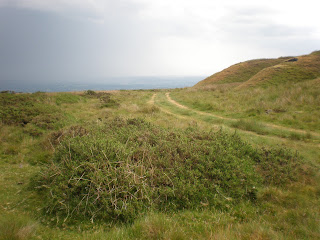I have a BK 1856d 3.5GHz freuency counter which was bought in the USA 20 years ago. It has been languishing in the wardrobe for 5 years as it wouldnt work on the GHz range via Input C but worked fine on the 100MHz Input A. This has happened before when i blew up the input modamp, i assumed the same had happened. Having some spare time it was time to investigate
First I removed the preamp module from the front panel. This required peeling back the plastic front panel label near the connector and removing the four M3 screws
The circuit has 2 modamps feeding an MC12079 prescaler. The modamps (running off 5V) feed a diode detector, the output of which is amplified by the LM358 opamp which is used by the logic in the counter to detect a signal at Input C
Firstly i measured the DC conditions of the modamps. Both showed 5V on the output and 1.4V on the inputs which looked promising. I then put a 1296MHz -30dBm signal into the N type and found a suitable amplifed signal at the output of the 2nd modamp. The modamps were good. I then looked at the output of the prescaler . Nothing but noise. The prescaler had died!
I found a replacement MC12079 on ebay and replaced it. The counter now works fine.



























